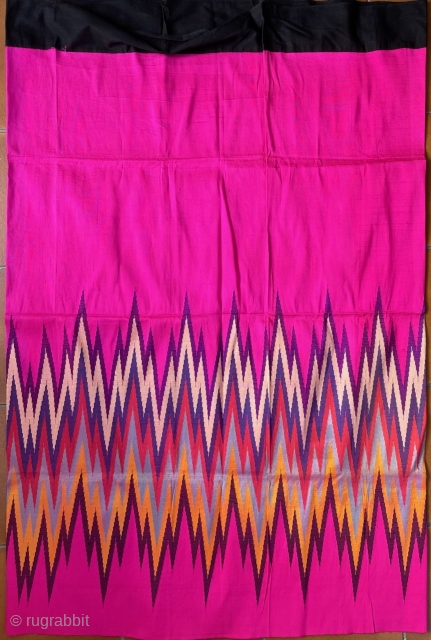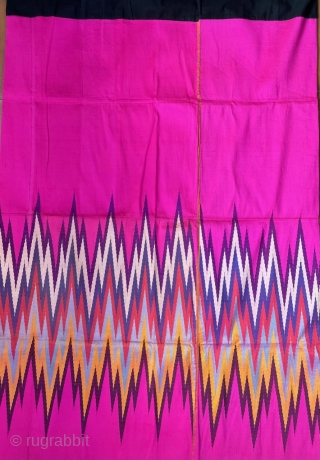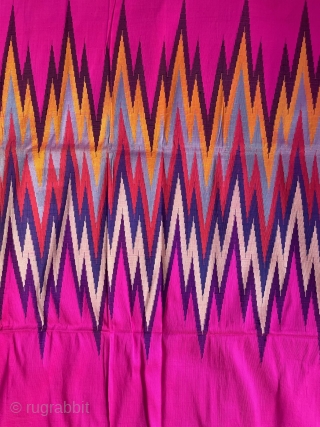Back
Burmese tubular skirt, judging by the measurements a htamein, rather than a longyi. Woven in a fairly heavy and lustrous silk, imported from China, these skirts were court wear in the early 20th century (1900-1920). The silk was woven at Amarapura and the surrounding district and was known as lun-taya acheik - a hundred shuttles. The colours were often very brilliant and the designs frequently much more complicated. This simple wave pattern is reminiscent of an earlier taste. The htamein is woven in one piece with a 9cm/3.5" black silk waistband (which would not be seen).The single seam is joined with hand stitching; there is no additional border at the hem. It has clearly been worn, but is in very good condition.
Length: 114cm/45"
Width: 160cm?62"
price:
SOLD
- Home
- Antique Rugs by Region
- Category
- Profiles
- Post Items Free
- Albums
- Benaki Museum of Islamic Art
- Budapest: Ottoman Carpets
- Gulbenkian Museum
- Islamic Carpets. Brooklyn
- Islamic Textiles. Brooklyn
- Konya Museum: Rugs
- MKG, Hamburg
- MMA: Caucasian Carpets
- MMA: Mamluk Carpets
- MMA: Mughal Indian Carpets
- MMA: Ottoman Carpets
- MMA: Safavid Persian Carpets
- MMA: Turkmen Rugs
- McCoy Jones Kilims
- Ottoman textiles. Met
- Philadelphia Museum
- Rugs and Carpets: Berlin
- Seljuqs at the Met
- TIEM, Istanbul: Carpets
- V&A: Classical Carpets
- Vakiflar Carpets: Istanbul
- Baluch Rugs: Indianapolis
- Gallery Exhibitions
- Jaf an Exhibition
- Alberto Levi Gallery
- Andean Textile
- Christie's London: 2016
- Francesca Galloway
- HALI at 40
- ICOC Washington, DC 2018
- Jajims of the Shahsavan
- London Islamic Week April, 2018
- Mongolian Felts
- Navajo Rugs: JB Moore
- Persian Piled Weavings
- SF Tribal & Textile Art Show 2020
- SF Tribal 2019
- Sotheby's: C. Alexander
- Turkish Prayer Rugs
- Turkmen Main Carpets ICOC 2007










